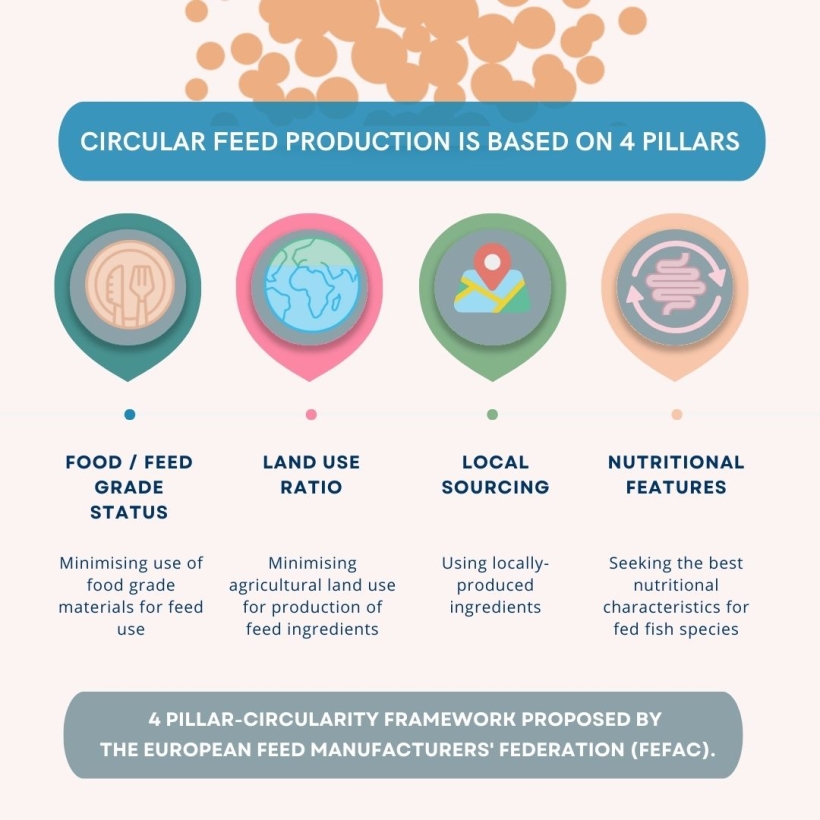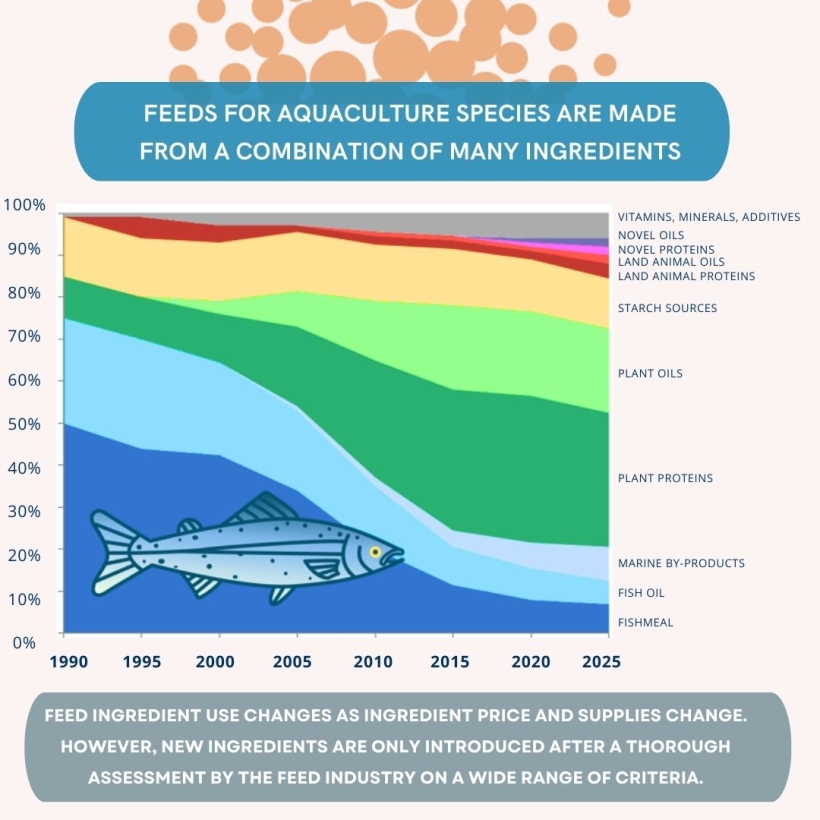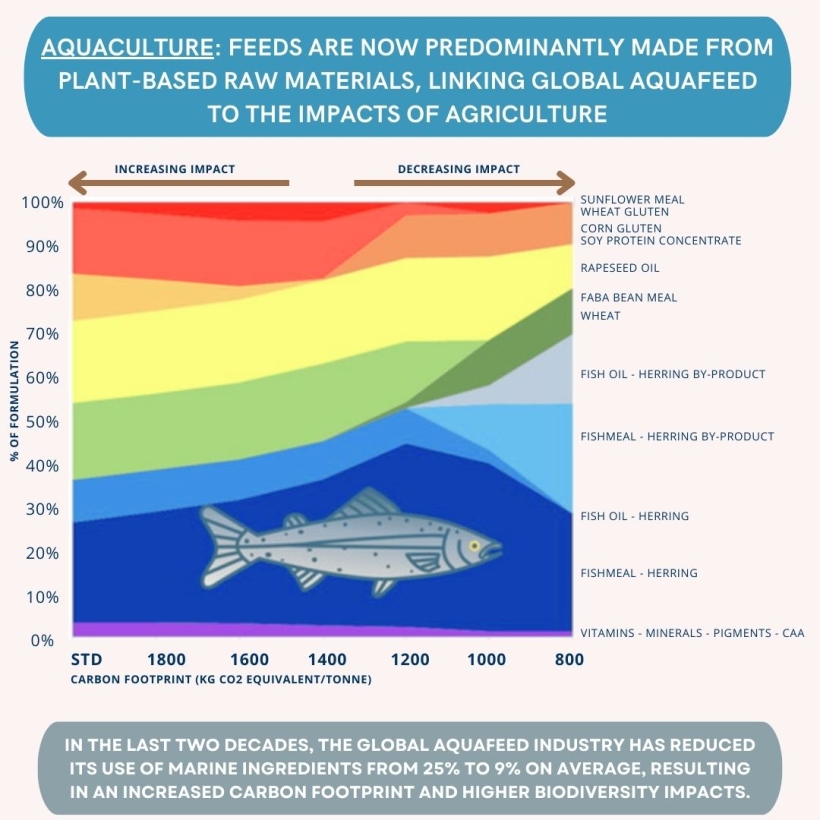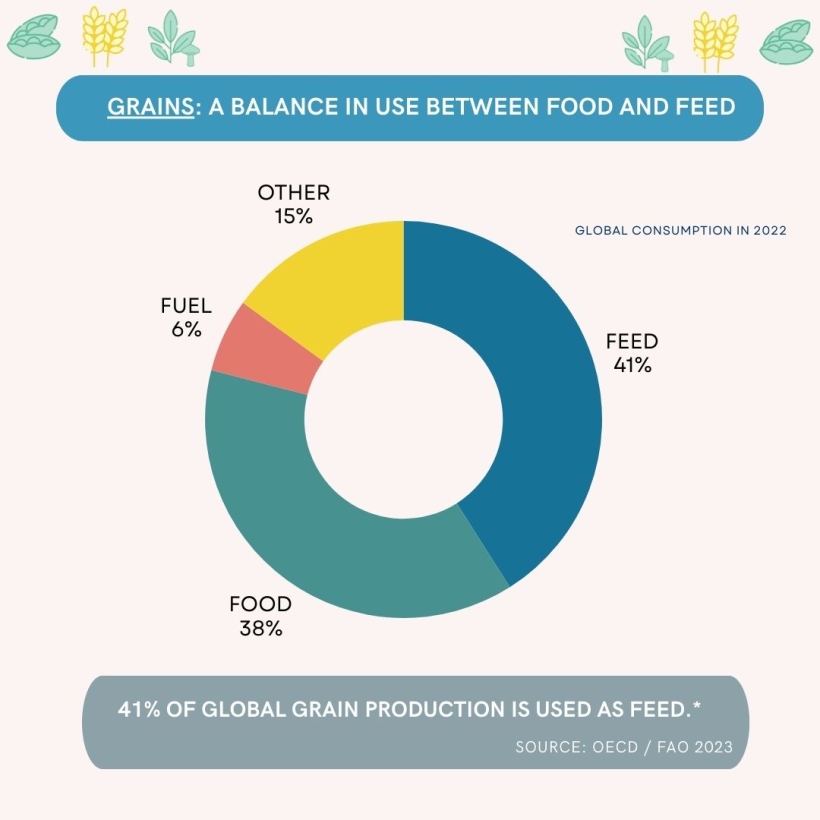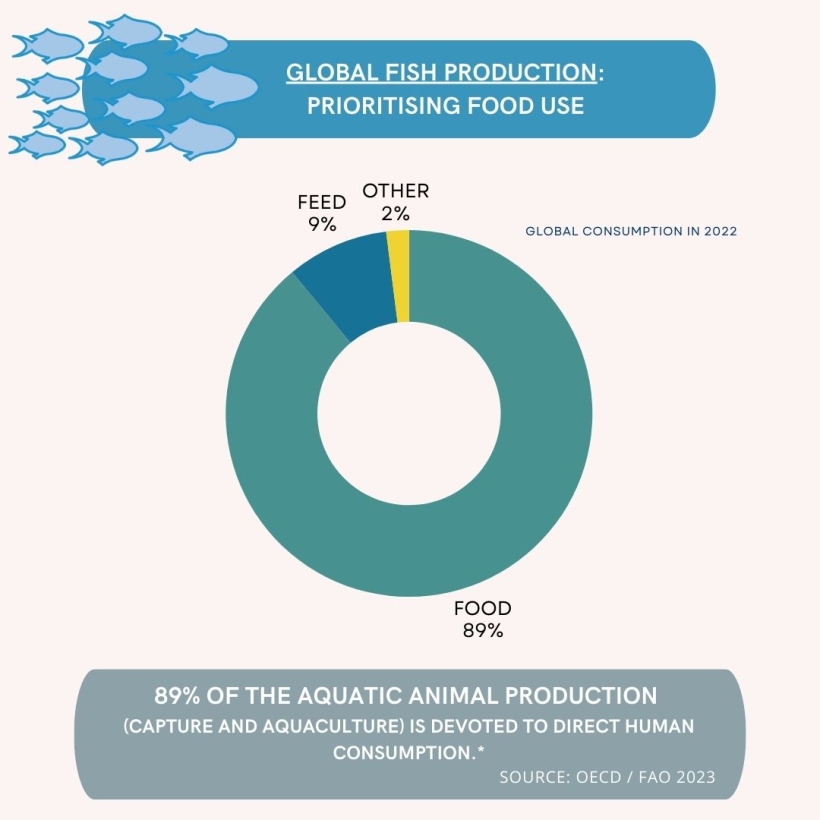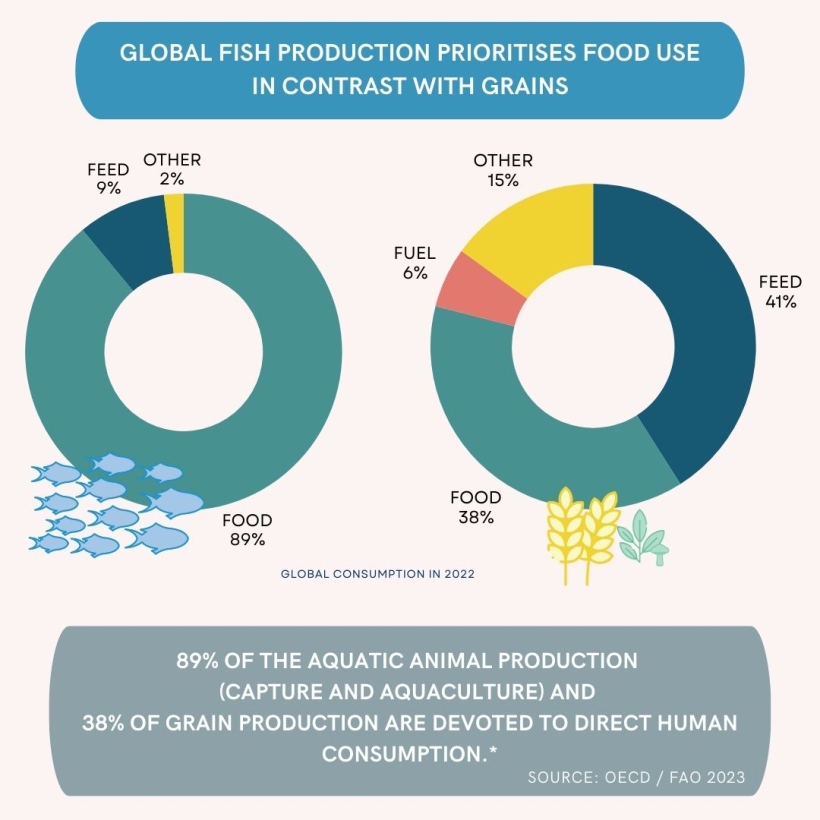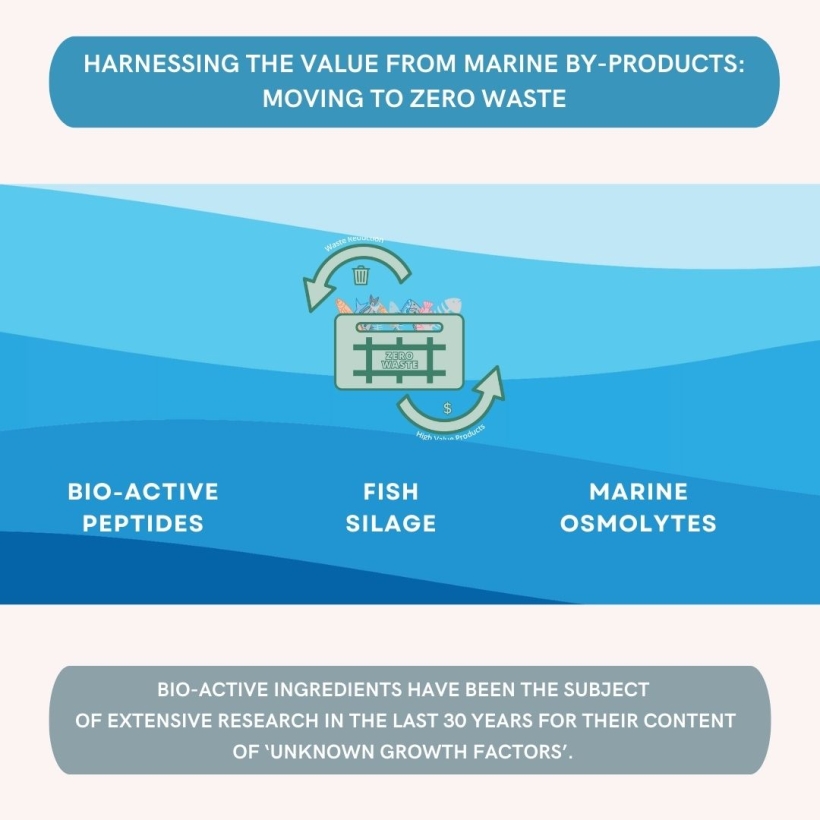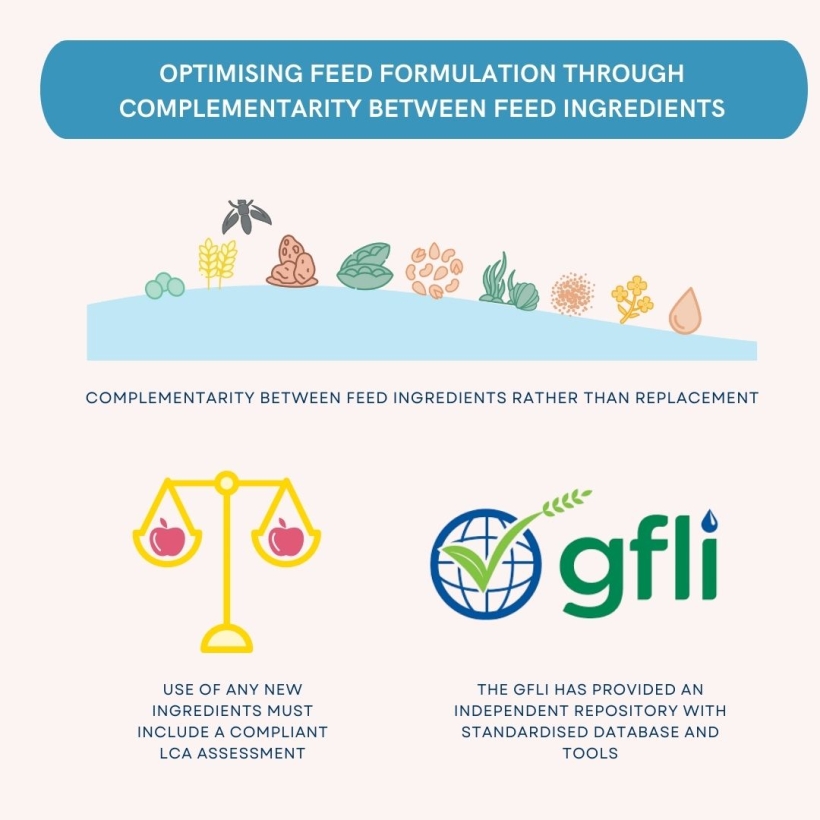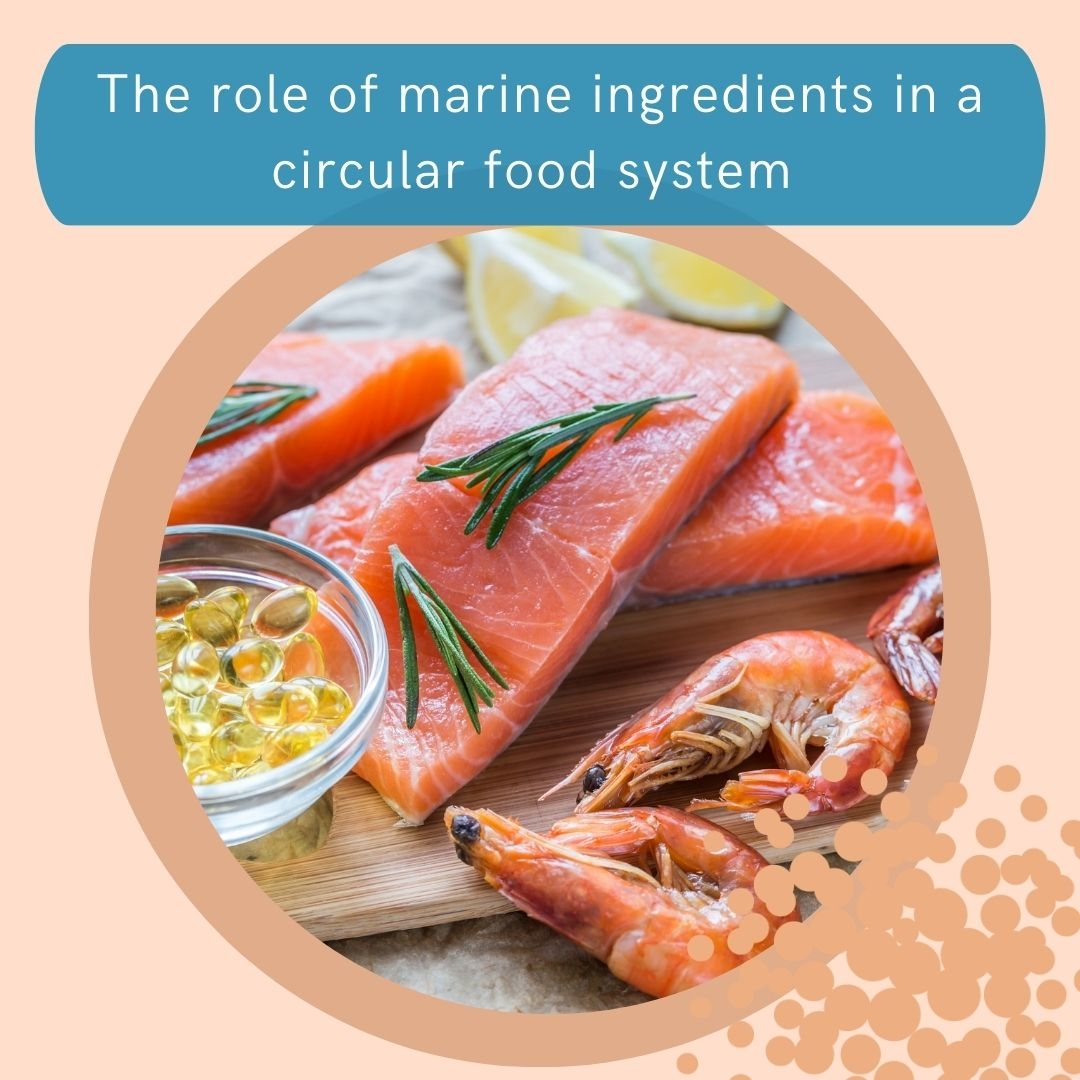-
首页
-
关键事实
-
The role of marine ingredients in a circular food system
The role of marine ingredients in a circular food system
Circular feed production is based on 4 pillars
Feeds for aquaculture species are made from a combination of many ingredients
A more comprehensive approach to sustainable feed and food production is possible with LCA works
AQUACULTURE: Feeds ARE NOW predominantly made from plant-based raw materials, linking global aquafeed to the impacts of agriculture
GRAINS: A balance in use between food and feed
Global fish production: Prioritising food use
Global fish production prioritises food use in contast with grains
Over 40% of the raw material used for marine ingredient production comes from fish by-products
Additional sources of circular feed ingredients must enable formulation of nutritious, balanced feeds, at scale
Harnessing the value from marine by-products: moving to zero waste
Optimising feed formulation through complementarity between feed ingredients
